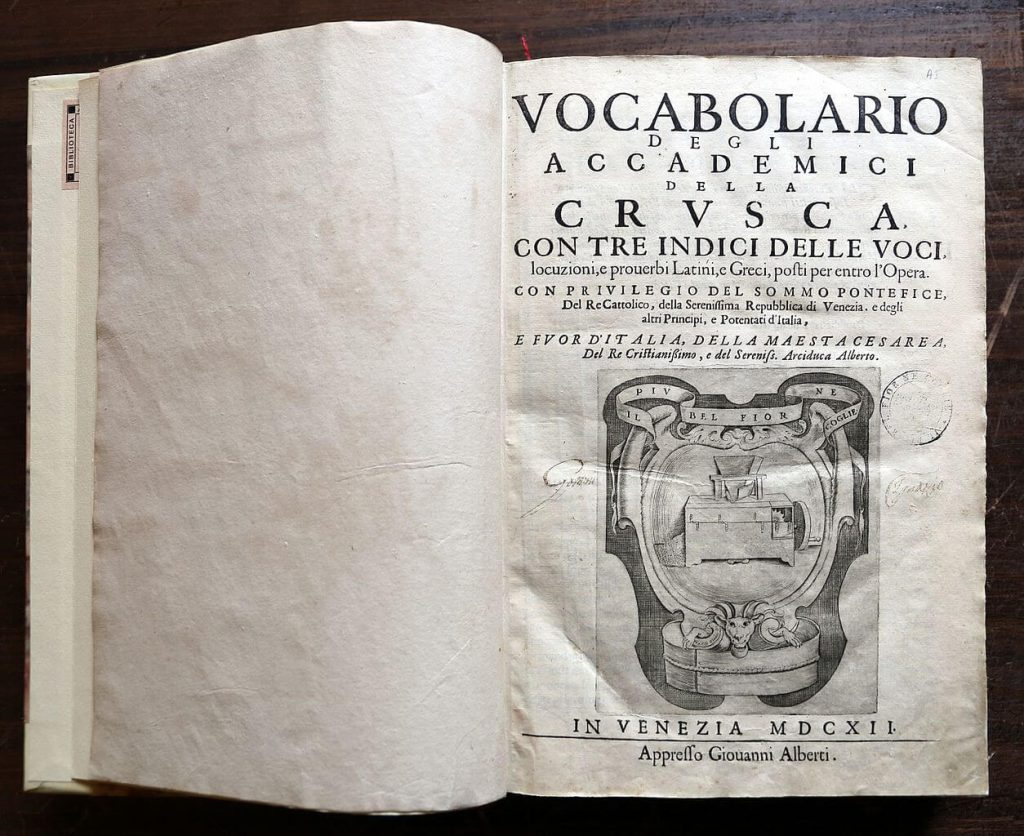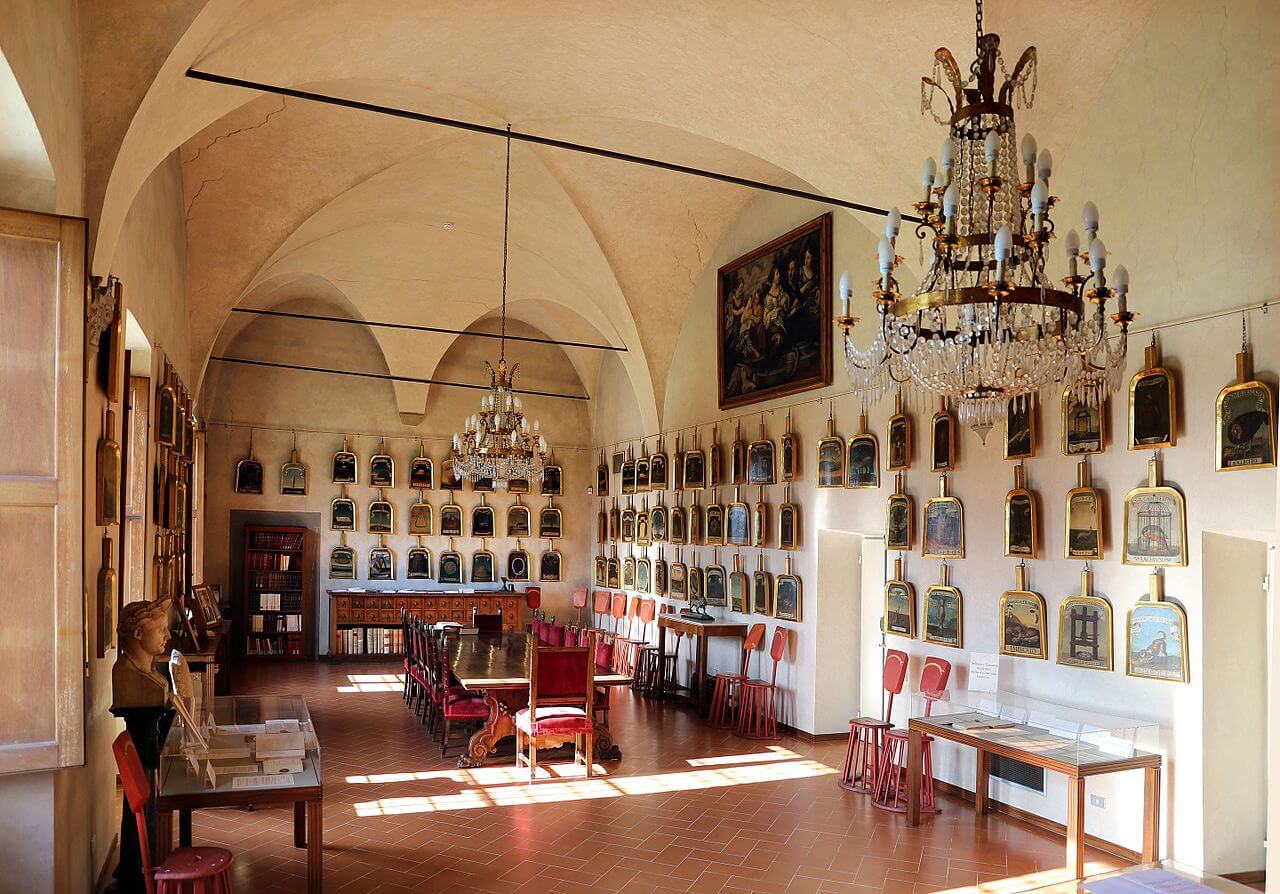THEBran Academy is the highest authority regarding the Italian languageas well as the oldest linguistic academy in the world still in business. The official institution dates back to 25 March of the 1585, although its founding members had already met since 1570. For more than four centuries the Academy has been looking for to preserve and enhance the Italian language, in all its aspects and is the body to which everyone turns when it comes to language consultancy. In its long life, Crusca has also dedicated itself to the editing of five editions of vocabulary of the Italian language and other publishing projects, always with the main objective of defending the purity of the language.
The birth of the Accademia della Crusca and its symbols
The Crusca was born in the second mid-sixteenth century a Florence, as an "anti-academic" circle, as opposed to the more formal and pedantic one Florentine Academy. His name derives from the "dashed”, Or rather the joking lines with which they entertained themselves, even if the more“ academic ”component was not lacking. The name of the Accademia della Crusca is linked to that of Leonardo Salviati (said the floured). It was precisely the Florentine humanist who gave the essential impetus for the transformation of the Crusca, from a playful circle to institution that he undertakes to preserve the Florentine vernacular, that is the fourteenth-century language of Dante Alighieri e Petrarch. The Crusca was indeed symbol of impurity, which had to be separated from the flour. Likewise the Italian language had to be cleansed of impurities.
The members of the Crusca therefore all took names relating to flour (just like Salviati) and adopted the motto "the most beautiful flower picks it up", Taken from Song book di Petrarch. The Academy also used the blender (tool that was used to separate the bran from the flour) as its own symbol and each member had a "oven shovel"With your name.
Vocabulary of the Academicians of the Crusca
The first big Vocabulary of the Academicians of the Crusca was printed in Venezia in 1612. It was a single tome that mainly included lemmas derived from works of the great Florentine authors of the fourteenth century (Dante, Petrarca, Boccaccio, etc.), to which were also added voices present in the works of later authors and other parts of Italy (such as Ariosto). 10 years later, in 1623, was printed in Venice there second edition. It was more of an update with new entries from new authors. In 1691 then came the The third edition, printed this time Florence in three volumes. Among the big news was the addition of voices taken from scientific works (previously absent). With the fourth edition, printed in Florence by 1729 to 1738 the volumes became six. Among the novelties, new words were added, also deriving from the peasant world and forestry.

In 1783 at the behest of the Grand Duke of Tuscany, Peter Leopold, the Bran and theAcademy of Appatists were merged intoFlorentine Academy. After returning to its own institution in 1811, Crusca began preparations for the drafting of the fifth edition of the Vocabulary. The first volume came out only in 1863 (afterUnification of Italy). Over the years, Crusca published other volumes, up to 1923 (literally "O"). The fifth edition remains to this day unfinished. The definitive separation of the Crusca from the project of the Vocabulary of the Italian language took place in 1965. The Vocabulary of the Academics of the Crusca, in its various editions, was of great importance not only for the Italian language, but also to have been a model for the creation of vocabularies of other languages, such as French, English, Spanish or German.
La Crusca today
Despite its long existence, the Accademia della Crusca is always a point of reference for everything related to the Italian language. Whether it's the centuries-old dispute between "arancino"and "arancina", The creation (for some questionable) of neologisms such as"petal", Of the use of the schwa (ə) or evergreens criticisms of Anglicisms in the Italian language, the Crusca is always ready to give its prestigious opinion. Italian is one language in constant evolution. Today (like four hundred years ago) achieving purity is an impossible goal. Fortunately, the Academy is always there to ensure that the tongue does not get too full of "bran".
Cover photo: © Sailko - Wikimedia Commons (CC BY 3.0).





